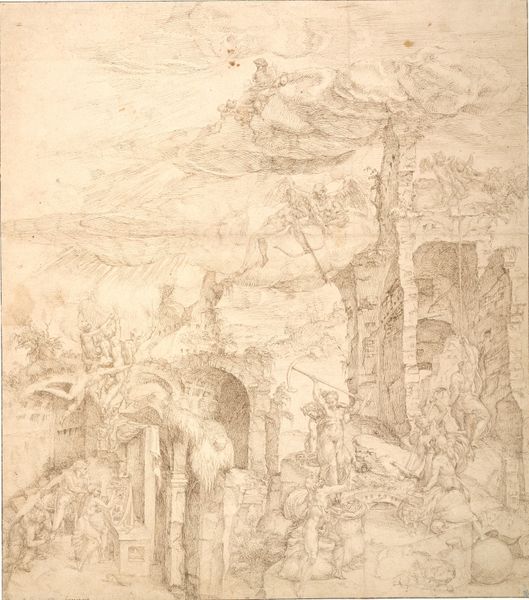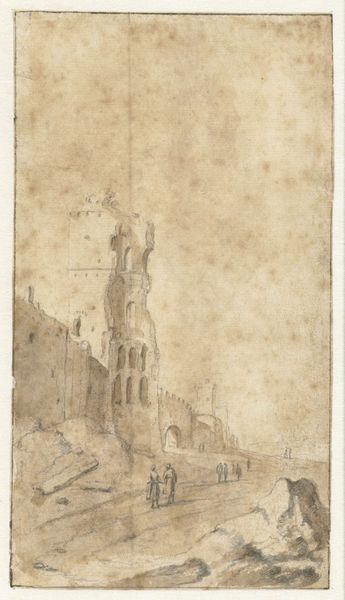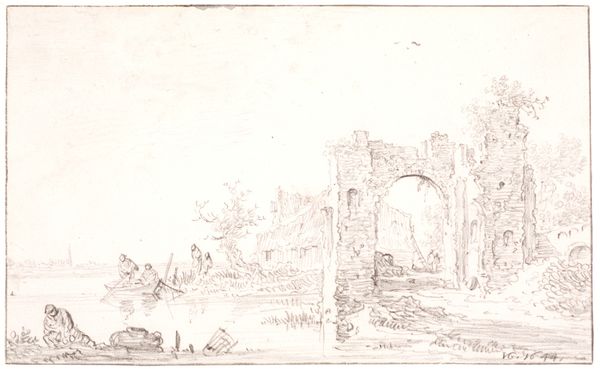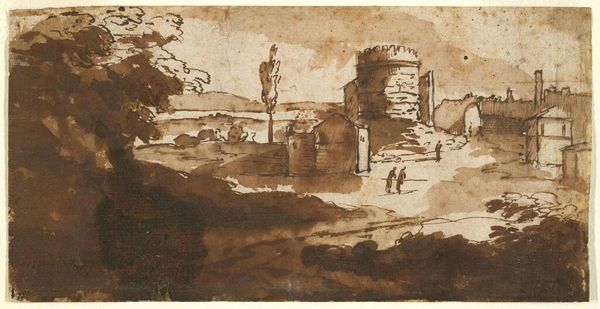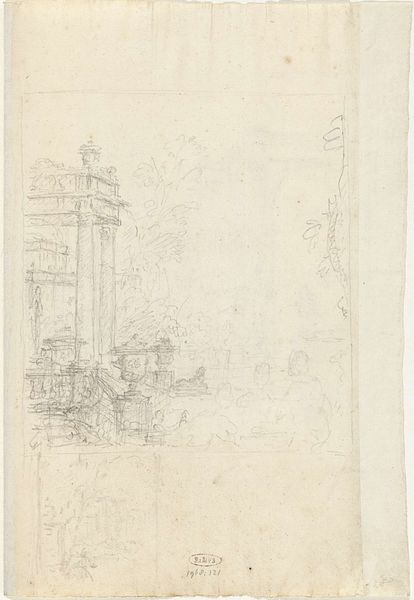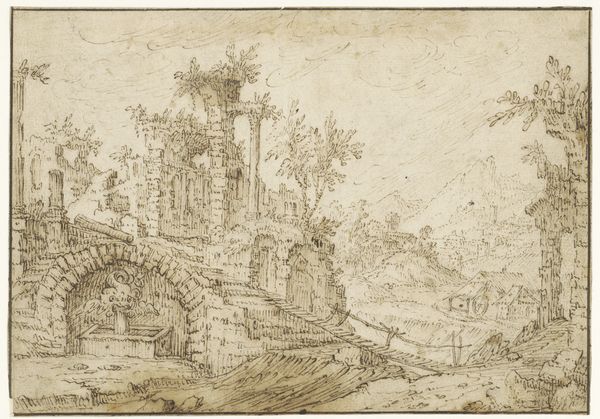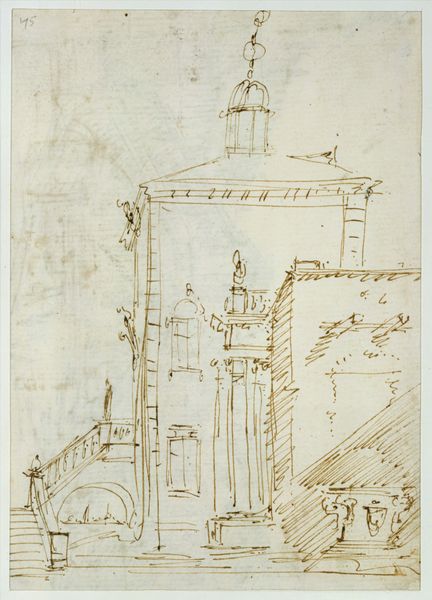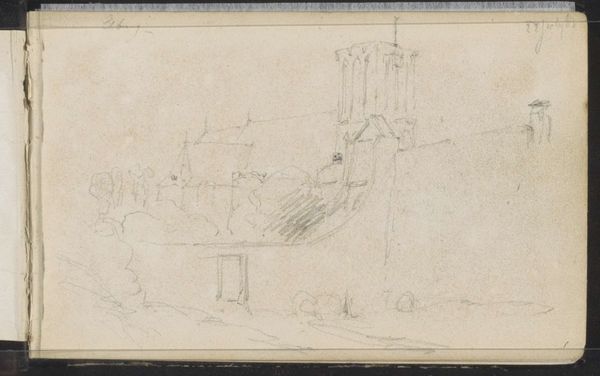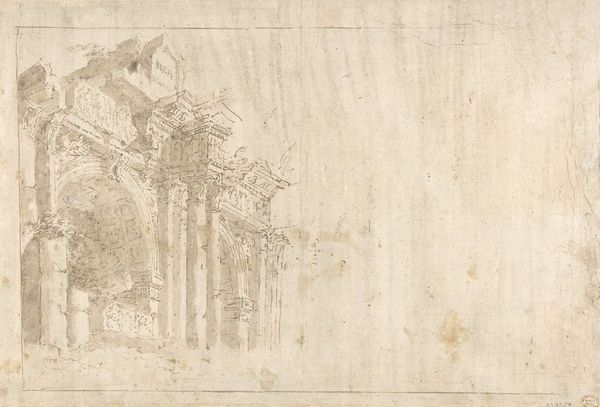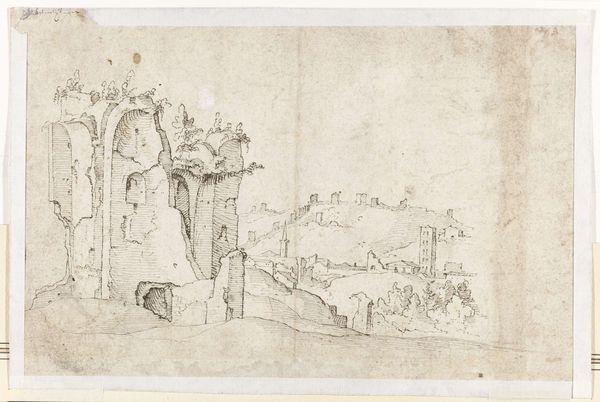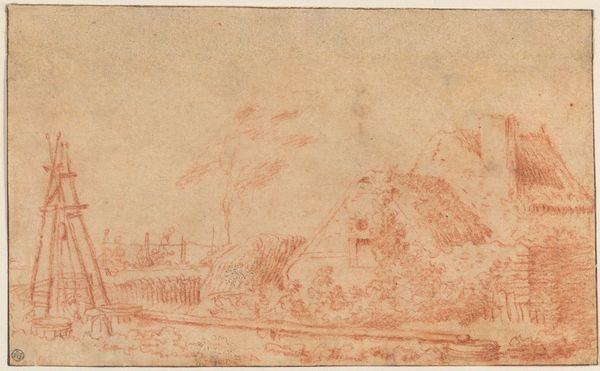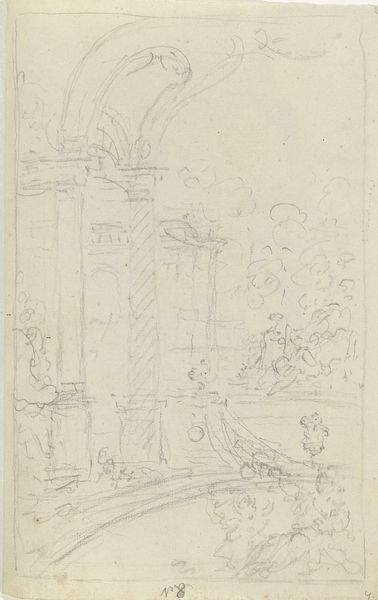
Copyright: Public Domain: Artvee
Curator: Let’s take a look at "Two Figures in a Landscape with Ruins," a drawing made around the mid-18th century by Francesco Guardi. Editor: My initial impression is of a somewhat melancholy scene, rendered with swift, confident strokes. There’s a strong sense of transience, even decay, softened by the figures in the foreground. Curator: Indeed. Guardi often depicted scenes of Venice, but this drawing seems to focus more on ruins in a landscape. He captures a sense of fading grandeur, and these romantic ruins may have been a popular subject for Venetian artists seeking patronage during this era. Editor: How might this choice of subject reflect the socio-political realities of 18th-century Venice? Were there shifts in power or anxieties about the Republic’s future that would find resonance in such images of decay and nostalgia? Curator: It is conceivable. By this point in Venetian history, power structures had evolved. There was concern around maintaining its position, so these works served to harken back to a powerful period, reinforcing social hierarchies and the power of institutions during a time of unrest. Editor: It feels charged with questions around the politics of visibility, and how those dynamics of visibility shape what histories we value. It invites questions about who is given space to flourish and whose stories we erase or render as ruins. What's particularly fascinating to me is that through the use of ink and the artist's technique, a somber image seems more open for debate than definite. Curator: I agree; the romantic notion of landscape that began gaining steam at the time allowed artists to consider ruins and other structures as picturesque reflections on history. As Guardi was part of that, the impact of art further illustrates what social values became prominent at the time, such as appreciation for art in ruins or architectural themes. Editor: A powerful reminder of the importance of contextualizing art. It enriches our appreciation of these artworks, so that in understanding social influences, our perspectives shift.
Comments
No comments
Be the first to comment and join the conversation on the ultimate creative platform.
